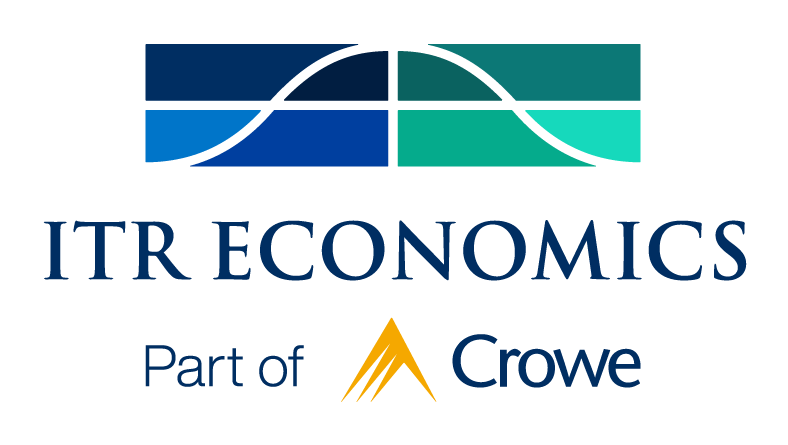April 28, 2023
- Home
- portfolio
- TrendsTalk
- April 28, 2023
LABOR MARKET
How has the labor market been faring following the pandemic? Join ITR Economist and Speak Lauren Saidel-Baker as she provides insight into ongoing labor trends in the latest episode of TrendsTalk!
The below transcript is a literal translation of the podcast audio that has been machine generated by Rev.
Hi, I’m Lauren Saidel-Baker, and welcome to this episode of ITR Economics TrendsTalk. Today I want to talk about a concept that we haven’t mentioned much since 2020. That is in the wake of the pandemic, when everything was off the rails and the labor market started to go a little bit haywire. Now we know that the labor market is still tight. Unemployment is still an incredibly low level. Essentially, I think of this as a full employment market. Even with those tech sector layoffs, we still have a dearth of employment age, qualified workers in this country. So job openings are still incredibly high, over 800,000 job openings in the manufacturing side of the economy alone. So as many tech workers as we’re laying off, I just don’t think those coders are all going to go reskill themselves and learn how to operate a CNC machine.
So these gaps do exist, and what we talked about a lot back in 2020 and 2021, is where did those workers go? Now, at the time, one of the initial outflows from the typical labor market was people starting their own business. Now it makes sense, back during the pandemic, if you didn’t feel so good, maybe you got laid off or furloughed, or even if you just got your stimulus check and you had this money, this financial buffer in your pocket all of a sudden and you said, “You know, I’m just not living out my passion. I’m going to go start my own business. I have this financial cushion in a way that I’ve never really had before. Let me try my own thing. We’ll see if it works.”. We, as economists, watched that trend. We saw a huge spike in the number of single proprietor job formations and a lot of new business formations as well.
So the question for me at the time was, how long does that last? I’ve asked this multiple times, did those businesses succeed? Did they maybe fail? And did those workers go back to the typical wage labor market? So we’re here today with a little bit of an update. Just last month, the Census Bureau reported that business applications increased by 4.5%. So this trend hasn’t gone away, and in fact, we haven’t seen that reversal, that reflow back to the typical traditional labor market. People are still starting new businesses. This is typical during the downside of the economic cycle, and as we all know, both US GDP and the industrial sector are in slowing growth trends, headed for a little bit of pullback, a little more contraction in 2024. So during times like this, when things feel unsteady, it can be a natural reaction. Try to start my own business, if I’m not so secure in my footing at my current career.
So what can businesses do about that? Well, the first thing is communicate to your employees. Let them know, we have a plan in place. We maybe use ITR economics forecasting, but whatever else it is that we have, we have a sense of how bad this cycle will be. We have a plan in place to keep things from getting too bad, whether that’s layoffs, furloughs or what have you. Communicate to your employees, so you don’t risk losing them just off the bat. The second thing you can do is make yourself a more competitive place to work. Now, wages are an easy way to do that. Everyone likes a salary increase or a higher salary, but you can also do it through culture. It’s going to look a little different for every business, but whatever you can do to not only attract these new workers, but critically to retain the quality workers that you have. Know your A team players and focus on retention, that’s going to pay many dividends.
But I also have one new suggestion, and that is that as we’re sitting here in late April, recording this TrendsTalk episode, it’s internship startup season. All of those students are looking for summer work and not just a summer job to earn a little money, but really a summer internship to start their career. This is such a great opportunity for businesses. If you can develop relationships with schools, whether high schools, colleges, universities, whatever it is that you are looking for those critical workers, you can have kind of a two-way interview. You’ll have a multi-week, couple month, maybe program with an internship, and you’ll get to interview this student, see if that is someone you want on your team after they graduate. More importantly, they get to interview you. They get to check out your company, see what the culture’s like, see if this is somewhere that they really do want to work. Studies have found that retention rates for former interns are materially higher, even at the one in five years of employment marks. So you not only have a better chance of finding those great workers, finding them early, but retaining them, keeping them through the next economic cycle. And as we all know, we can look a little bit further ahead down the line.
Thank you so much for joining me today for this episode of ITR Economics TrendsTalk. I’m Lauren Saidel-Baker. Let’s talk more soon.




